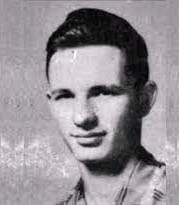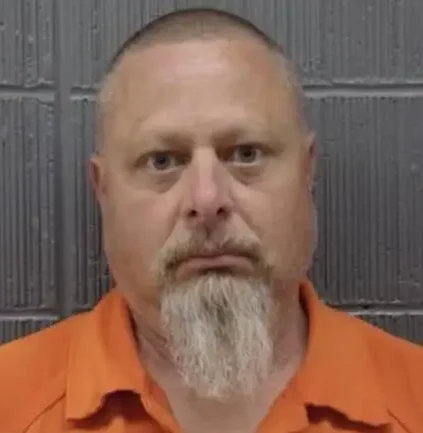
In August 1990, in Gainesville Florida, while students were preparing for the start of fall semester, shocking chain of events brought a dark cloud of fear and terror amongst the whole community in the college town for at least two or three months. People were afraid to go out, afraid to open their doors afraid of the dark.
On Sunday August 26th, Gainesville police received a call from the Williamsburg apartment complex. The parents of 17-year-old Christina Powell, a resident there were demanding to be led into their daughter’s apartment. When officers arrived on the scene they were told that Christina and her 18-year-old roommate Sonja Larson had not been seen for days. Inside the duplex apartment laid the bodies of college students Christina Powell and Sonja Larson. The murderer used very a screwdriver to get in through a sliding door. Sonja’s body is found on her bed. He put duct tape over her mouth to prevent her screaming. Sonja Larson was killed in a blitz style attack. She was immediately attacked, overwhelmed, stabbed multiple times. He raped her after her death. She had probably been asleep. The murderer at some point had pulled the victim to the edge of the bed and spread her legs. Downstairs, investigators find the body of Christina Powell. It was a very much different scene. She had been raped. He spent a long time with her. She had marks on her wrist where she had been bound with duct tape and she was lying on her back. Her legs were spread apart and she had postmortem partial amputation of her breast. He stabbed her five times in the back. He washed their bodies. On August 24th, 1990 the murders took place.

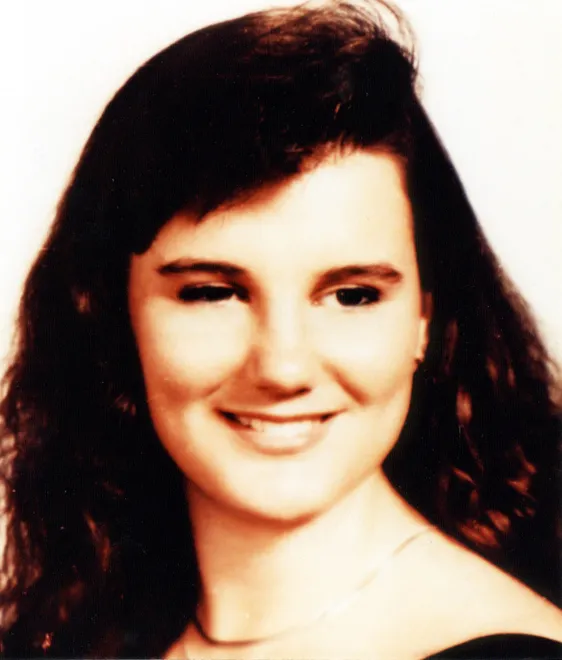
The stab wounds from both victims gave authorities a clue as to the type of weapon the killer used. It was a military survival knife the prototype of which would be the marine Ka-Bar knife. Near the body of Christina, he had placed a towel and a bottle of dishwashing detergent. Police knew that he had a knowledge of police work.
Detectives scoured the area, interviewing neighbors and searching for clues but they came up empty. Gainesville authorities asked for help from other jurisdictions and agencies, including the FBI.
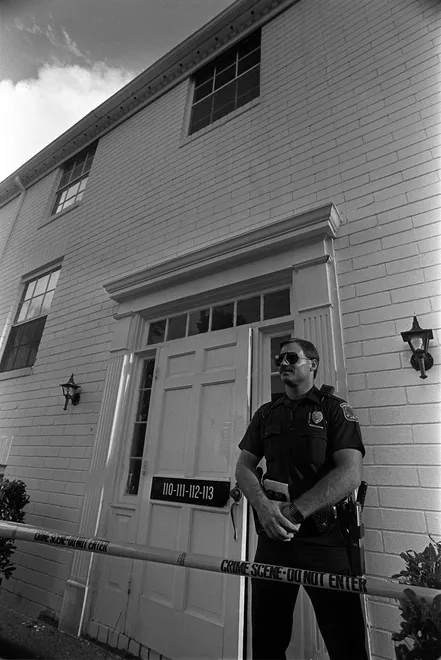
On August 27, County Sheriff’s office was concerned for one of their part-time employees, Christa Hoyt an 18-year-old chemistry honors student had not arrived for a midnight shift. At around 12:30 a.m. a deputy is dispatched to a residence. The lock on Christa’s sliding glass door has been tampered with. The murderer waited Christa in her apartment. She had been bound at the wrist with the duct tape, raped. She was killed with a single stab wound in the back. Her body was found propped up, sitting on her bed bent over at the waist. He had sliced off her nipples and left them on the bed next to her, and police discovered that her torso was sliced open, from her chest to her pubic bone. She was decapitated. Her severed head perched on a shelf across the room, giving the impression that she was looking at herself. Her body was washed. The murder weapon was the same. The murder took place the barely a day after Sonja Larson and Christina Powell were murdered, on August 25th, 1990.

His MO (modus operandi) was to get into the house by using a screwdriver, to stabbed them to death with Ka-Bar, to rape them, sometimes postmortem, and to mutilate or dismember their bodies.
At that time FBI believed that an individual who mutilates, sexually mutilates the body is a schizophrenic, because during psychotic episodes an individual is out of contact with reality. They also assumed histrionic personality disorder because of the way the head was posed to shock. That is the attention seeking, so they want any kind of attention.
On August 28, Tracy Paules, who was 23 years old, was living with her roommate Manny Taboada, six foot two man, also 23, were found dead. By then people were alerted that something was going on. There is a tape recording of Tracy, it is a phone recording in which she basically is telling someone that she had been uncomfortable and she said ‘if Manuel doesn’t show up pretty soon, I’m leaving’. Manuel was working that evening and Manny came home. The murderer broke into their apartment by opening their sliding glass door with the same tools he had used previously. He found Taboada asleep in one of the bedrooms and killed him after a struggle for a sustained period of time. Tracy heard a struggle and screams. She went down the hall to Taboada’s bedroom. She tried to run and attempted to barricade herself in her bedroom, but he broke through the flimsy door. He taped her mouth and wrists and raped her before turning her over and stabbing her three times in the back. He cleaned and posed Tracy’s body, but left Taboada’s in the same position in which he had died. The murderer used a screwdriver, Ka-Bar knife.


Word quickly spreads that the killer had struck again and this time one of the victims is a male. The fact that he did attack this man and struggle with a young, strong man sent the whole Gainesville area into a panic and at that time we became very frightened they were sleeping in shifts. Students were leaving the college town, parents came to take their children home, even police officers’ wives stayed at hotels.
The murderer targeted young college-aged females with brunette hair of a small petite build.
There was armed robbery at the local branch of the First Union Bank.
During their investigations into the murders and the armed bank robbery police came across two men acting suspiciously, so these two officers followed them into the woods. They came upon a campsite, near the University campus. One of them fled, slipped into the night, and the other, drug dealer was apprehended.
They looked around the campsite and they noticed there was a camping tent set up there. They noticed a few things inside that tent. They saw the money and they knew right away that might be the evidence from the bank robbery. They also found a gun that matched the description of the handgun that was used in the bank robbery. But there were also some other items which were quite perplexing. There were a pair of trousers, some pubic hair. They didn’t make the connection at the time between the murders and the items at that campsite. But they did back them up and they were to prove incredibly valuable, when the pieces were put together.
With an entire town under the glare of the national media spotlight, the FBI were under pressure to find the killer.
On August the 30th amid the panic and chaos on campus police identified a 19 – year – old freshman, with mental health issues as a suspect, Edward Humphrey. He lived in the same apartment complex as the last two victims and had been outwardly aggressive to other students. Two days after the final murder, he was hitting his grandmother and the police arrested him. He was highly conspicuous because of his behavior. He was loud and drunk, he was off his medication and he had brain injuries; he was out of control a lot. Humphrey’s grandmother didn’t want to press charges, but the state decided that in order to keep their prime suspect in custody, they posted bail as an unachievable one million dollars. hoping to conclusively link him with the college murders. They also collected saliva, hair and blood samples from Ed Humphrey to compare with samples found at the three crime scenes. DNA was very new, so it took 21 days to get the first profile from DNA.
Word of that leaked out to the Press, so he became a focus of the media.
DNA evidence had proven that prime suspect Edward Humphrey was not the murderer.
Over the next couple of days FBI started conducting investigations to determine who the bank robber was. Meanwhile, several robberies were committed.
The serial number of the gun used in the bank robbery was traced to its registered owner, three hours south in the coastal city of Sarasota. FBI agents went to interview him. He told them that he had sold the gun to him for cash, to some vagrant, who was just passing through town. The agent asked him whether there was anything that stood out about that guy; anything that he could remember that would help us. The agent was told that he had a very distinctive attribute – missing finger. FBI and police were in a task force meeting and started recalling what that FBI agent had reported. The individual who bought the gun, used in the bank robbery, had a missing finger and one of the Florida Department of Law Enforcement agents stood up and said ‘holy shit’. He proceeded to explain that during the crime scene investigation of the first murders of Christina Powell and Sonja Larson that they found a piece of paper towel on the counter in the kitchen, on one side was the imprint of a man’s penis as if he were wiping himself off after conducting a sex act, on the other side of the paper was a handprint with a finger missing and it was at that point that everybody realized the bank robber is the murderer.
Crime lab began re-examining other exhibits from the Woodland Campsite in connection with the student murders. Among the elements of significance were ski mask whose fibers matched the duct tape found at the third murder; Krista Hoyts pubic hairs were found on the sleeping bag at the campsite; blood on a pair of his trousers; a screwdriver was found, which matched the marks on the sliding doors. But the most significant, perhaps, of all was there was a series of audio tapes. He said: ‘’ I know I’ll have to run the rest of my life, but I’m getting pretty good at it, so I don’t want you feeling sorry for me. I don’t want you worrying about me. I’m a big boy, I take care of myself. We’re all down here for just a breath anyway. Well, I’m going to sign off for a little bit… I got something I got to do.’’ It was ominous and allusion to his crimes, he had recorded that prior to his first murders.
Gainesville killings emerged police in Shreveport Louisiana realized that there were significant similarities between these cases and the unsolved murders of the Grissom family in 1989. They suspected all eight homicides could be connected, but the identity of this serial killer remained a mystery.
Given the fact that murderer stopped, the decision was made to test the DNA of all inmates in Florida who had been arrested between three or four months. Anybody who had been arrested during that time frame had their DNA checked against the DNA on the homicides.
On September the 2nd and five days later he tried to commit another robbery this time he had a car crash and was arrested. He was in jail pending the trial for the armed robbery. So he was on the list to have his DNA checked against the murderer’s. He also had a partially missing finger on his left hand. they obtained his profile and lo and behold they match

Brian Jarvis was a sergeant covering major crimes in Marion County where rolling was brought in for questioning in connection with the murders. The detective offered to show him the photos of the crime scene and Danny couldn’t look at them. He turned his head away and he said ‘I don’t want to see that’. He was anxious, according to detective’s recollection.
On September the 18th 1991, Danny Rolling was convicted for three counts of attempted armed robbery and two counts of aggravated assault on thelaw enforcement officer. He was jailed for life.
Two months later Rolling was indicted on five counts of first-degree murders. He initially pleaded not guilty.
Still he began to confess to agents and detectives. But he didn’t do this in a standard traditional way. He actually spoke through a fellow inmate. He whispered to his ear and the man said it out loud.
Once the details of his crimes were revealed through his fellow prisoner Rolling himself broke his silence and spoke to the investigators. He said: ‘’I have dealt with different personalities all my life. One personality is a gentleman named Ynnad… Jesse James toad, he, you know, he’s not a good person but he’s not really an evil person,’’ and another one, he mentioned, the evil one that causes him to kill, Gemini, was a personality really responsible. Danny continued: ‘’Because I’m tell you now Danny is not that person. I never wanted to come this way. Believe me, god is my judge, I never wanted to come this way. But I’m here and now I gotta live with this.’’
Rolling’s trial was scheduled to start on February the 15th 1994 in Gainesville. While prosecution prepared for insanity defense, based on multiple personality disorder, with the jury being selected, Danny Rolling surprised everyone. He pleaded guilty. Against his lawyer’s advice and he didn’t get any plea deal. Families of the victims, everybody in the courtroom couldn’t believe.

The question was whether he was going to get a death penalty or life in prison. On April the 20th 1994, the 12 jurors unanimously recommended the death penalty.
During the trial or somewhere around sentencing, he wanted to address his fiancée, an author, Sondra London. He did it by singing in the courtroom. She wrote a book about him. He was playing guitar and on his tapes in the wood, they also found his songs. In prison he painted, mostly angels.
Sondra London met him when he was already in prison and she knew what he did, so many speculated that she used him for his book. She previously dated G.J. Schaefer, a convicted murderer and suspected serial killer. But they dated when they were in High school. So, maybe she didn’t use him after all.

After 12 years and many appeals, on October 25th 2006 Danny Herold Rolling is executed by lethal injection.
Outside the prison, death penalty opponents stood in a circle singing “Amazing Grace” after Rolling was pronounced dead, but others were there in support of the execution.
Who was Danny Rolling?
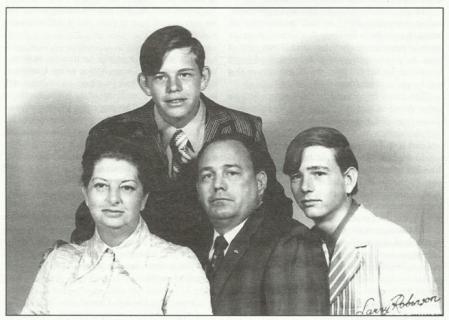
Danny Rolling is also known as The Gainesville Ripper.
Daniel “Danny” Harold Rolling was born on May 26, 1954 in Shreveport, Louisiana. His mother was 19 – year – old, Claudia. His father, James, was a police officer and a war veteran. It is believed that his father may have had post-traumatic stress disorder (PTSD) from his experiences in combat, but there’s really no way to know that. He was known as aggressive and combative in community. What was happening behind closed doors, Danny Rolling spoke to Sondra London. All we know about his early years we know from him. His mother fell pregnant almost immediately after the couple married, much to his father’s disgust. James mistreated Danny as well as Claudia and Danny’s younger brother Kevin, with the level of violence intensifying after Kevin was born. James refused to show affection to Danny, believing that it was not masculine. For the rest of Danny’s life his father would refer to him as an accident that should never have happened. He had a violent temper and almost anything young Danny did was able to ignite it.
Dr. Elizabeth Yardley: ‘’If he didn’t breathe properly he was beaten by his father, that the slightest thing would set him off. And I think, if we look at that now, we’d call that coercive control now. We’d call that the kind of behavior that is designed to chip away at somebody’s self-esteem, that really does destroy someone’s identity.’’
He was told by his father that he was useless. Claudia left James in 1958 for about six weeks but returned to him after he pleaded with her to come back. In 1959 Danny stole a candy bar from a local store. His parents made him return it and apologized to the owner of that store. In 1962 Claudia left James again and again they would reunite in 1963. His mother was his only form of stability, but she was struggling with mental health issues. A young child Rolling’s existence became a solitary one. He would hide in the woods or wander the neighborhood, to escape the constant abuse from his father. He would go out at night, when his parents didn’t know about it, and he would look through the windows of the neighbor’s homes and he would see them around the kitchen table. He didn’t have a stable family. Danny would fail the third grade due to attendance problems. Counselors at the school said that Danny was suffering from an inferiority complex with aggressive tendencies and poor impulse control. They indicated that Danny needed counseling, but he never received it. His mother, Claudia, suffered what was described as a nervous breakdown, around that same time she left James. Twice in 1963 and once in 1964 returning each time a few weeks later. So, this seems to be a pattern.

In 1965, when Danny was 11 years old, there was a fight between Claudia and James. Claudia caused self-inflicted wounds with a razor and locked herself in the bathroom. James broke the bathroom door down and Claudia was hospitalized. Danny interfered with his father’s attack of his mother and he was beaten. That same year Danny began having a number of fantasies about being violent and sadistic, and he started drinking alcohol.
In 1966 James attempted to kill Claudia. That same year Danny ran away after being put in jail for two weeks, after he was found drinking. But he returned when he was hungry. In 1968 Danny was looking through a neighbor’s bathroom window when James caught him and beat him. On Christmas day 1969, Danny who is now 15 received a guitar and would teach himself to play. He recalled that this was one of the best memories of his life. Later Danny would claim that around that same time he started developing multiple personalities in order to cope with the trauma that he was enduring. In 1970 Danny goes to jail after being caught drinking by James. He was arrested again for consuming alcohol in 1971. Later that year Danny who had already dropped out of high school, because he wanted to run away from home, according to his words, tried to enlist in the Navy. But failed the enlistment test. He then joined the Air Force and was stationed in Florida. Danny wouldn’t last long in the Air Force. He was arrested for disobeying orders and drug possession. A mental health professional diagnosed him with a personality disorder. He was kicked out of the Air Force, but allowed to receive an honorable discharge.
After this he went to live with his grandmother and started attending the United Pentecostal Church where he met a young woman in the congregation. It was love at first sight. In 1974 when Danny was just 20 the couple married. A year later they welcomed a baby daughter. He was a very religious man, hyper-religious. He had a very black and white view of the world of the ongoing battle between good and evil. His wife became increasingly afraid of him, as he frequently threatened her. In 1976 a police officer saw Danny looking through a window of another house and transported him home, without arresting him. Danny and his wife started having more problems. She had an affair and he became more violent. In 1977 she filed for separation. The couple would divorce six months later. Around the time his wife left him, Rolling was working in a local bakery. He had an accident with a bread slicing machine and lost part of his finger.
It is after this, that Danny committed his first rape. A woman looked like his wife. This is something that Danny did quite a bit during his criminal career in 1978 and 1979. Danny started committing a number of armed robberies. He was arrested and sentenced to six years. In prison Danny had a turbulent time during his first sentence. He was convicted of another robbery in Alabama, so he had sentences in two jurisdictions. He tried to escape three different times. One of those times it took the police three days to catch him. He was released from prison in Alabama in June 1984.
He broke into a woman’s house in November with the intent of committing rape, but he felt badly about it and he didn’t follow through.
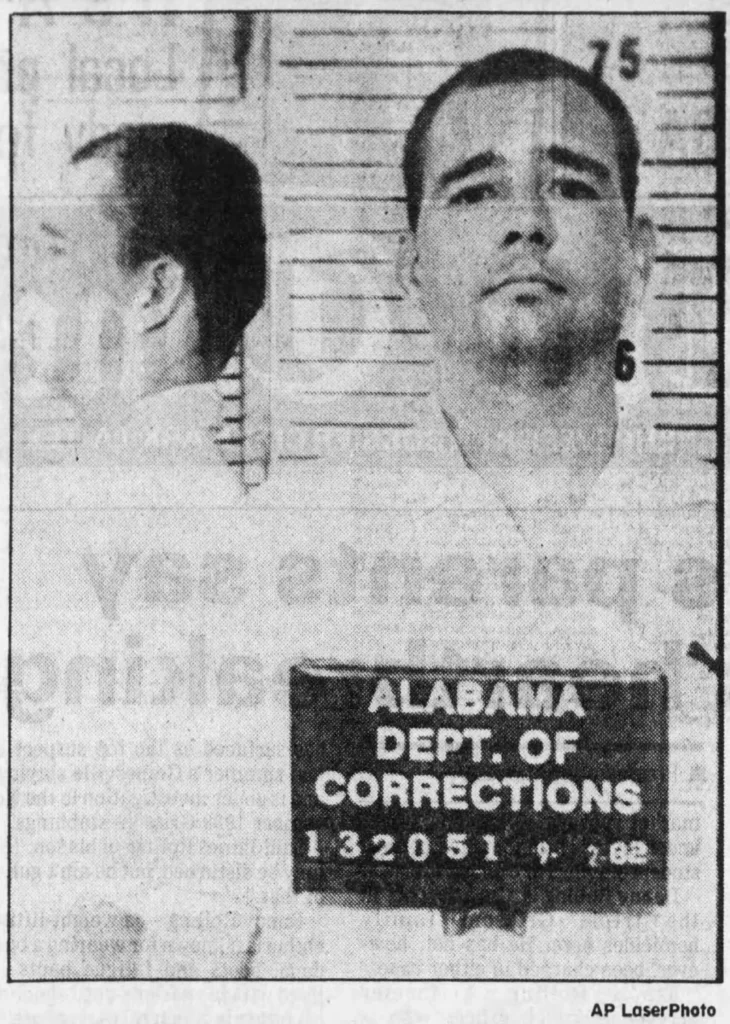
At this point he started traveling around the country committing a number of robberies. He was arrested for one of those robberies and sentenced to four years in 1986. After being released in 1988. He returned to Shreveport, Louisiana, because it was a condition of his release. They didn’t want him to remain in Alabama. He found himself once again back in the family home. His father told him that he was uselessness, that he was 35 years old and he had virtually amounted to nothing until that time. He found a job there in Louisiana in a restaurant but was fired for missing too much work. Danny claimed that it was wrongful dismissal.
Usually he would take this fairly quietly and he would internalize his trauma and that resentment would bubble away. But on that occasion he externalized. Or maybe it was emotional reactivity. He threatened his manager, he shouted at him. That rage began to come out and that was the day of his first murders.
He was infatuated with a 24-year-old department store worker named Julie Grissom he had decided that he wanted her essentially, so he followed her home and he spied on her. He saw her with her family which included her father Tom, 55, and Tom’s grandson Sean, 8. The back door of the house was unlocked. Armed with a knife Rolling let himself in and began a violent attack on the whole family, brutally stabbing all of them. On that evening he killed Julie. He raped her, carefully cleaned her, put her dirty clothes in the washing machine and posed her body provocatively. He also killed Tom. He killed Sean. So he wiped out three generations of an entire family. But it was the attack on eight-year-old Sean that was particularly horrific. Sean was stabbed with such force that knife went all the way through him and stuck in the ground. That was the sort of extreme level of violence that even his forensic pathologist had rarely seen. Psychologically, for the first time he had been in full control.
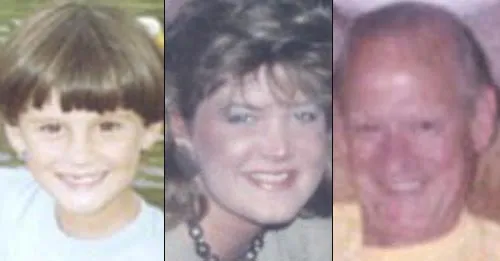
In 1989 Danny broke into a house wanted to commit a rape and/or murder. Woman who lived there who he had seen before through her window, didn’t come back to the house. So Danny left after stealing property, including a 38 caliber revolver.
In May of 1990 Danny got into a fight with his father. Danny shot him in the stomach and in the head. His father, James, survived, but lost use of an eye and an ear.
Danny then committed a number of armed robberies before moving to Florida. He assumed a false name Michael Kennedy Jr.
He started camping in the woods behind the University of Florida.
All experts at his trial agreed that he didn’t have multiple personality disorder, even defense expert said that he hadn’t had multiple personality disorder, because that evil personality, Gemini, hadn’t been found even under hypnosis.
Once he was even diagnosed with borderline personality disorder. That is why it was later transformed into multiple personality disorder. BPD has both transient stress-related dissociative symptoms and identity disturbance within its diagnostic criteria.
He was finally diagnosed with antisocial personality disorder and paraphilic disorders.
